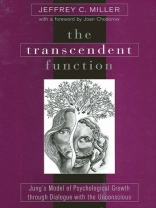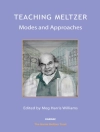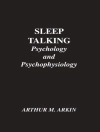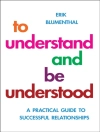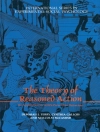The transcendent function is the core of Carl Jung’s theory of psychological growth and the heart of what he called individuation, the process by which one is guided in a teleological way toward the person one is meant to be. This book thoroughly reviews the transcendent function, analyzing both the 1958 version of the seminal essay that bears its name and the original version written in 1916. It also provides a word-by-word comparison of the two, along with every reference Jung made to the transcendent function in his written works, his letters, and his public seminars.
विषयसूची
Preface
Acknowledgments
1. Introduction to the Transcendent Function
Development of the Ego in Western Consciousness
Emergence of Depth Psychology and Emphasis on the Unconscious
Primer on the Transcendent Function
Scope and Organization of the Work
2. Detailed Analysis of the Transcendent Function Essay
1916: Historical Context for the Transcendent Function
The 1916 and 1958 Published Forms of the Essay
Exploration of Details of ‘The Transcendent Function’ Paper
The Prefatory Note
Definitional Sections
Compensatory Relationship of the Unconscious to Consciousness
Omnipresence and Compensation of the Unconscious
The Constructive Method: Importance of Purpose and Meaning
The Role of the Analyst: Mediating the Transcendent Function
Artificially Inducing Unconscious Contents
Producing Unconscious Material: Active Imagination
Utilizing Unconscious Material: Creative Formulation and Understanding
Relation of Ego to Unconscious: Bringing Together the Opposites
Final Result: Dialogue Creating Emergence of the Third
Closing Passages: Liberation and the Courage to be Oneself
Synthesis: The Transcendent Function as Reflected in the Essay
3. Tracing the Transcendent Function through Jung’s Works
Thematic Analysis of References to the Transcendent Function
The Opposites: The Source and Development of Jung’s Thinking
The Dynamic Opposition of Consciousness and the Unconscious
The Role of Fantasy and Symbol
Operation of the Transcendent Function
Jung’s Ambiguity about the Nature of the Transcendent Function
Individuation: Constructive View, Meaning and Transformation
The Archetypes of the Collective Unconscious
Anima and Animus: Mediators between Consciousness and the Unconscious
The Self as Progeny of the Transcendent Function
Jung’s Inconsistencies Surrounding Dreams and the Divine
The Shadow: Relationship to the Transcendent Function
Integrating the References to the Transcendent Function
4. The Transcendent Function as the Core of Jung’s Work
The Transcendent Function As Jung’s Root Metaphor
Implications of the Expansive Transcendent Function beyond Jung
The Core of the Transcendent Function
The Transcendence of the Transcendent Function
5. The Transcendent Function and the Theories of Others
Winnicott: Transitional Objects as Mediating Elements
The Analytic Field: The Third as Mediating Agent
Freud and Ego Psychology: The Ego as a Mediating Structure
Other Depth Analogies: Kohut, Klein, Fordham, and Hillman
Non-Depth Analogies: Gestalt, Client-Centered, and Cognitive Therapies
The Third as a Universal Psychological Construct
6. The Deeper Roots of the Transcendent Function
The Binary Opposition Inherent in Consciousness
Bridging the Chasm between Subject and Object
Liminality and Initiation: An Archetypal Between-ness
Hermes: The Archetypal Messenger between Realms
The Third: Foundations of the Number Three
Rhythm of Consciousness between Differentiation and Unity
The Transcendent: Connection with a Greater Consciousness
The Neither/Nor and Autochthonous Urges of the Psyche
7. Vivifying the Transcendent Function in Everyday Life
The Metaphorical View of the Transcendent Function
Tilling the Transcendent Function with the Alchemical Metaphor
The Neither/Nor and the Metaphorical Third
The Germination of the Alchemical Fourth
Plowing the Transcendent Function Field in Relationships
Surveying the Transcendent Function in Social and Cultural Issues
Transcendent Functioning in the Garden of Everyday Life
Concluding Remarks
Appendix A. Textual Comparison of the 1916 Version to the 1958 Version of ‘The Transcendent Function’
Appendix B. References to the Transcendent Function in Jung’s Works, Letters, and Seminars
Appendix C. Review of Literature Relating to ‘The Transcendent Function’
Introduction
Jung and Jung’s Writings
Basic Reference Materials
Elements of Jungian Psychology
Origins of the Transcendent Function
Role of the Analyst
Clinical Aspects and Applications
Cultural, Political, and Societal Contexts
Religious and Spiritual Matters
Notes
References
Index
लेखक के बारे में
Jeffrey C. Miller is a licensed psychologist in Palo Alto, California.
